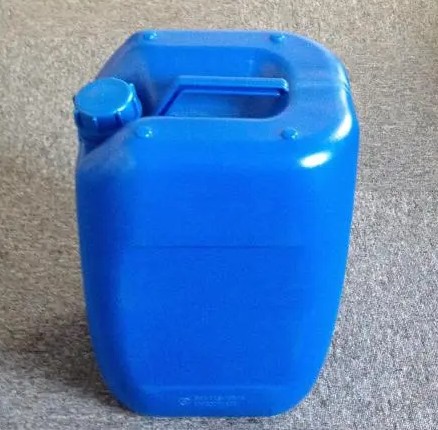Classification And Uses of Scale Inhibitors
What Is a Scale Inhibitor?
Scale inhibitor is a class of agents that can disperse insoluble inorganic salts in water, prevent or interfere with the precipitation of insoluble inorganic salts on the metal surface, scale function, and maintain good heat transfer effect of metal equipment.
Scale inhibitors can remove scale and prevent scale formation, improve the efficiency of heat exchange, reduce electricity, or reduce fuel consumption; water treatment can also reduce sewage, improve the utilization rate of water, and generally save 60% or more.

Classification of scale inhibitors
According to the polymeric composition of the scale inhibitor, it can be divided into two categories: natural polymeric scale inhibitors and synthetic polymeric scale inhibitors. Synthetic polymeric scale inhibitors can be further divided into carboxylic acid polymeric scale inhibitors, sulfonic acid polymeric scale inhibitors, phosphorus-containing polymeric scale inhibitors, and environmentally friendly scale inhibitors of 4 kinds.
1. Polycarboxylic acid scale inhibitor and dispersant
Polycarboxylic acid compounds have a good scale inhibitory effect on calcium carbonate scale, and the amount is very small. Commonly used are polyacrylic acid PAA, hydrolyzed maleic anhydride HPMA, AA/AMPS, multi-component copolymers, etc.
2. Organic phosphonate
Organic phosphonates are more effective in inhibiting calcium sulfate scale, but are less effective in inhibiting calcium carbonate scale. It has low toxicity and is easily hydrolyzed.
3. Organic phosphonic acid scale inhibitor
Commonly used are ATMP, HEDP, EDTMPS, DTPMPA, PBTCA, BHMT, etc., which have a good effect on inhibiting the precipitation or precipitation of calcium carbonate, hydrated iron oxide or calcium sulfate.
4. Polyphosphate
Commonly used polyphosphoric acids are sodium tripolyphosphate and sodium hexametaphosphate. Long-chain anions formed in water are easily adsorbed on tiny calcium carbonate crystals. At the same time, this anion is easy to replace with CO32-, thereby preventing the precipitation of calcium carbonate.
The mechanism of action of scale inhibitor
In terms of mechanism of action, the action of scale inhibitors is divided into four parts: chelation solubilization, coalescence and dispersion, electrostatic repulsion, and crystal distortion. And in the laboratory evaluation test, dispersion is the remedy of chelation. Lattice distortion is the remedy of dispersion.
1. Chelation Solubilization
The process of bonding two or more coordination atoms of the same polydentate ligand with a central ion and certain conditions to form a complex with a ring structure is called chelation. The result of chelation is that the scaling cations (e.g., ca2+, Mg2+, etc.) interact with the chelating agent to form stable chelates, thus preventing them from coming into contact with the scaling anions (e.g., CO3 2-, SO42-, PO43-, and SiO32-, etc.), which greatly reduces the chance of scaling.
2. Coalescence and Dispersion
The result of dispersion is to prevent the mutual contact and coalescence of scale-forming particles, thus preventing scale growth. Scale forming particles can be calcium or magnesium ions, scale forming particles consisting of thousands of CaCO3 and MgCO3 molecules, dust, silt, or other water-insoluble matter. Dispersants are polymers with a certain relative molecular mass (or degree of polymerization). The level of dispersion performance is closely related to the size of the relative molecular mass (or degree of polymerization).
3. Electrostatic Repulsion
The effect of electrostatic repulsion is that the copolymer dissolves in water and adsorbs onto the inorganic salt crystals, which increases the repulsion between the particles, hinders their coalescence, and puts them in a well-dispersed state, thus preventing or reducing the formation of scales.
4. Crystal Distortion
The effect of lattice distortion is that some of the functional groups in the molecule occupy a certain position on the inorganic salt nucleus or grain, hindering and disrupting the normal growth of the inorganic salt crystal, slowing down the growth of the crystal reducing the formation of salt scale.
As can be seen, scale inhibitors are effective in dispersing insoluble inorganic salts. The chemicals in them effectively prevent the coalescence of dirt, thus achieving scale inhibition, which also has a great industrial effect.
Performance of scale inhibitor
The scale inhibition effect of scale inhibitor is due to its ability to stop the growth of small carbonate crystals and deform the lattice so that the carbonates do not exchange heat in the circulating cooling water. Hard scale is formed on the surface of the equipment. In contrast, the organic phosphate and other components in the tissue form a protective film with the metal. It combines with the calcium ions in the circulating cooling water to prevent metal corrosion. The PH value of this product is applicable in a wide range, between PH value 7.0-10.0 have scale inhibition and corrosion inhibition, so that industrial production and operation is simple and will not cause corrosion and scaling due to uncontrolled PH value. The ultimate carbonate hardness of the product can reach about 680mg/L, with a good scale inhibition effect.
Understanding the performance of the scale inhibitor can be widely used in various industries to give full play to its performance. At the same time, with the continuous development of technology, the performance of scale inhibitors is also improving to expand the scope of use of the product and promote the development of scale inhibitors.